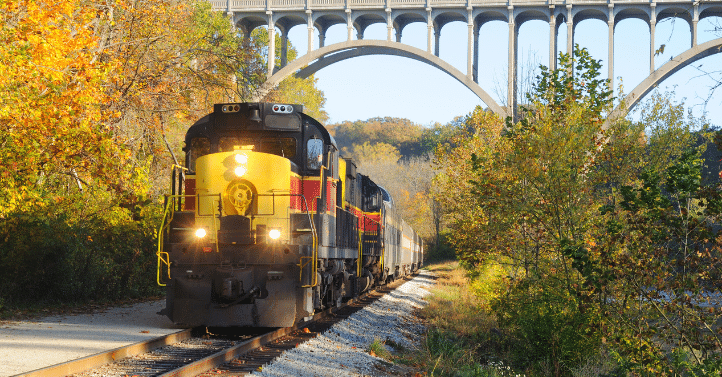Recent train derailments in the United States are highlighting the importance of regular maintenance of rails and train cars as well as vegetation management near railways.
Toxic chemicals that were spilled in the East Palestine, Ohio, incident have created an environmental disaster with evacuations, fires, and concerns for leaching of the chemicals into the air and waterways. Cleanup is underway and a controlled burn of the chemicals took place to prevent further explosions. In Nebraska, another derailment saw the overturning of 31 train cars that were carrying coal; a third derailment occurred just yesterday in Florida. Meanwhile, a spate of storms and wildfires have also wreaked havoc in the U.S.
“Severe weather such as snowstorms/blizzards, ice storms, hurricanes, and tornadoes can down trees and/or limbs, downing power lines and causing prolonged power outages that can last for days or weeks impacting thousands of households,” says Laura Mahecha, Director of our Agrochemicals sector. “Controlling the weather is impossible, but with proper and frequent maintenance of trees and the brush around power utilities, these costly outages could be minimized.”
Similarly, wildfires are dangerous, lethal, and costly, impacting large land areas in various regions of the country – but effective vegetation management of forests can mitigate these natural disasters and limit their spread.
Rangeland and pastureland are actually the leading end-use segment for industrial vegetation herbicides and pesticides, and much of this usage occurs in the Western U.S. Ranges are those lands on which the native vegetation (climax or natural potential plant community) is predominantly grasses, grass-like plants, forbs, or shrubs suitable for grazing or browsing use. Rangelands include natural grassland, savannas, many wetlands, some deserts, tundra, and certain forb and shrub communities. Pastures are those lands that are primarily used for the production of adapted, domesticated forage plants for livestock. They have been seeded, usually to introduced species (e.g., tall fescue) or, in some cases, to native plants (e.g., switchgrass). Other grazing lands include woodlands, native pastures, and croplands producing forages. The most significant differences between ranges and pastures are the kind of vegetation and level of management that each land area receives.
According to Mahecha, the herbicides category, which includes aquatic herbicides, is the largest product category with an estimated 44.0% share of the market. Other products used in industrial vegetation management include insecticides, algaecides, and plant growth regulators. Further key areas where these products are used include along roadways, electric utilities and pipelines, in forestry, along railroads, and in aquatic areas. Leading suppliers of industrial vegetation management products include Corteva, Envu (after being spun off from Bayer/Monsanto), BASF, Nufarm, and UPL.
Kline & Company is currently conducting research on these products and end-use segments for our 2022 edition of Industrial Vegetation Management U.S., to be published this summer. A portion of the research includes detailed structured surveys of range and pasture professionals, utilities and pipeline operators, and those in charge of maintenance of roadways, railways, and forests. The study is a comprehensive analysis examining the industrial vegetation management market in the United States, providing details on the important market segments; it will focus on key trends, developments, changes, challenges, and business opportunities. For more information, contact us.

